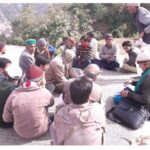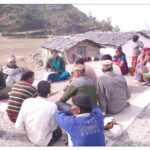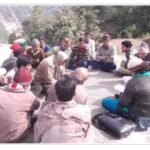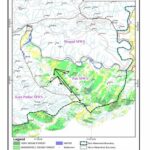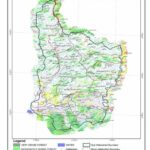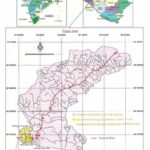PREPARATION OF MICRO PLANS AND DPRs
PREPARATION OF MICRO PLANS AND DETAILED PROJECT REPORTS (DPRs) OF 13 VILLAGES AFFECTED BY VYASI HYDRO-ELECTRIC POWER PROJECT UNDER VYASI CATCHMENT AREA TREATMENT (CAT) PLAN
NTRODUCTION AND BACKGROUND OF THE PROJECT
The hydro-power sector is experiencing significant growth in India, particularly in the Himalayan region. While hydropower is often viewed as a clean source of energy, it is also impacted by and impacts local environmental quality. Since 1994, Environmental Impact Assessment (EIA) has been required for clearance to build Hydro-Electric Projects (HEPs). This process includes a public hearing and mandates the creation of Environmental Management Plans (EMPs) aimed at mitigating environmental damage and displacement impacts. One of these plans is the Catchment Area Treatment (CAT) Plan, designed to enhance environmental and watershed services in the catchment area.
The Ministry of Environment & Forests, Government of India requires the preparation and implementation of Catchment Area Treatment Plans in cases related to diversion of forest land for medium and major irrigation projects and for hydroelectric power projects under the Forest Conservation Act (FCA), 1980. The Catchment Area Treatment Plan is a critical document that portrays the ecological health of the catchment area. Various soil and moisture conservation and watershed management programs are necessary to prevent soil erosion, improve free drainage, and rejuvenate the degraded ecosystem in the catchment area. The implementation of the Catchment Area Treatment Plan is essential to ensure the sustainable development of the hydro-power sector in India and to minimize the adverse impacts on the local environment.
AIMS AND OBJECTIVES OF THE PROJECT
1. Formulate Micro Plans and Detailed Project Reports (DPRs) for the 13 villages impacted by the Vyasi Hydro-Electric Power Project.
2. Construct an inclusive plan that addresses the multifaceted environmental and socio-economic repercussions of the hydro-power project within the Vyasi catchment area.
3. Deploy Micro Plans and DPRs as tools to acquire in-depth understanding of the challenges experienced by the affected villages.
4. Employ a comprehensive strategy to effectively manage and mitigate the diverse impacts of the hydro-power project on both the environment and the well-being of local communities.
COMPONENTS AND ACTIVITIES OF THE PROJECT
1. Develop Micro Plans and Detailed Project Reports for the 13 villages affected within the framework of the Vyasi Catchment Area Treatment (CAT) Plan.
2. Submit the formulated plans to the Forest Department for their subsequent implementation.
3. Effectively mitigate the varied impacts arising from the hydro-power project and concurrently foster a trajectory of sustainable development.
TARGET AREA OF THE PROJECT
The project specifically directed its efforts towards 13 villages situated within the Kalsi Soil Conservation Forest Division and Mussoorie and Chakrata Forest Division. These villages had been affected by the Vyasi Hydro-Electric Power Project in the Dehradun district of Uttarakhand.
TARGET GROUPS AND BENEFICIARIES OF THE PROJECT
The project’s primary goal was to involve the entire community residing in the 13 designated villages affected by the Vyasi Hydro-Electric Power Project in the Kalsi Soil Conservation Forest Division. Its objective was to encourage active participation in the formulation of micro-plans and Detailed Project Reports (DPRs) aimed at mitigating the project’s environmental impact. The project engaged various stakeholders, including community members, local government officials, experts, and non-governmental organizations (NGOs), through a series of workshops, consultations, and community meetings, ensuring their meaningful involvement in the process.
FUNDING PARTNER OF THE PROJECT
The project was funded by the Divisional Forest Officer (DFO) of Kalsi Soil Conservation Forest Division, Department of Forests, Government of Uttarakhand, Kalsi, district Dehradun, Uttarakhand.
SANCTIONED BUDGET OF THE PROJECT
The project received sanction from the Divisional Forest Officer (DFO) in 2013, through a sanction order No. 1209/3-3 dated 24.10.2013. The assigned budget for the project, which spanned forty days, was Rs. 3,34,000.00.
OUTCOMES AND ACHIEVEMENTS OF THE PROJECT
The successful implementation of the assignment has resulted in the following outcomes and achievements:
1. Micro Plans and Detailed Project Reports have been prepared for 13 villages affected by the Vyasi Hydro-Electric Power Project.
2. The project has provided a comprehensive plan to address environmental and socio-economic impacts of the hydro-power project in the Vyasi catchment area.
3. The preparation of Micro Plans and DPRs has provided a detailed understanding of the issues faced by the affected villages.
4. The micro-plans have prioritized environmental and social issues and proposed interventions, such as soil and water conservation measures, afforestation, and alternative livelihood opportunities.
5. A participatory approach involving local communities, experts, and stakeholders was used to prepare the micro-plans, ensuring that their needs and perspectives were taken into account.
6. The micro-plans serve as a crucial tool for implementing the CAT Plan, promoting sustainable development, and minimizing the impact of the hydro-electric project on the environment and local communities.


